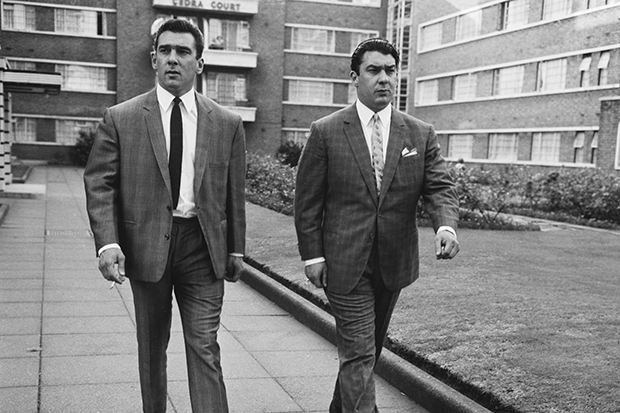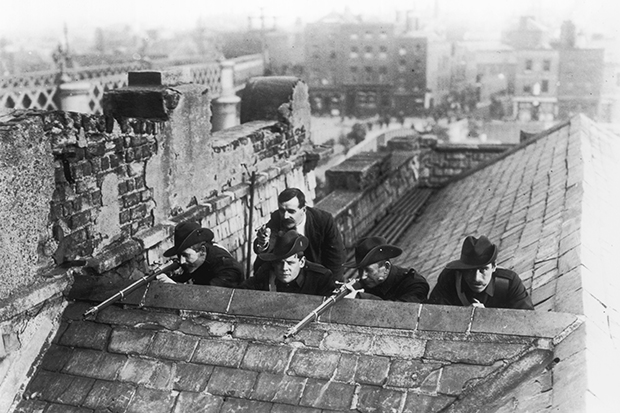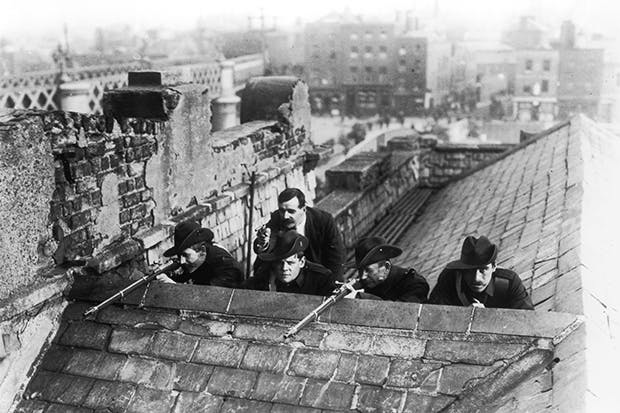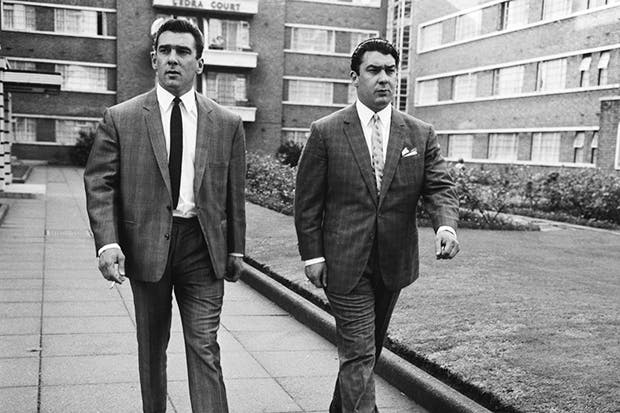When I was at university, Reggie Kray was my penpal. I wrote to him in 1991, asking for an interview for The Word, an Oxford student newspaper. Kray was unavoidably detained at Her Majesty’s pleasure. But he sent me a prompt, polite letter back.
‘Thanks for your letter,’ he wrote. ‘I will see you as soon as possible. We only get three visitors a month. Could you send me a copy of The Word?’
I sent him a copy — but I never did get to be among his three monthly visitors before his death in 2000, at the age of 66. Still, I’m ashamed to say, I was thrilled enough just to get a letter from him; and to drink in his wild, scrawling handwriting — three huge, near-illegible words to a line; nine skew-whiff lines to a page of prison-issue foolscap. A graphologist would have had a field day. Was this how deranged murderers always wrote? Or was this what happens to anyone’s handwriting after 20 years in jail?
Either way, the letter satisfied my ghoulish fascination with murderers. I had first been hooked on the Krays by John Pearson’s excellent 1972 biography, The Profession of Violence: The Rise and Fall of the Kray Twins — adapted for the new film, Legend, out this week (reviewed by Deborah Ross on p. 55).
I’m afraid I was also rather obsessed with the Moors murderers at the time. But, then again, I was only 19. That’s not a justification for my nauseating interest in these evil savages; just an explanation.
These days, I have dropped my true-crime obsession. Cinema hasn’t; nor has the art world. As well as the film, there’s a tie-in Kray exhibition, Legend of the East End, in a gallery on Bethnal Green Road, the twins’ old stamping ground.
On show is Ronnie Kray’s black evening jacket, tailored by Gieves of Savile Row, and his chunky gold ring, with diamonds that spell out ‘RON’. You can also see the familiar 1960s pictures: Reggie sparring with his grandfather, the bareknuckle boxer Jimmy ‘Cannonball’ Lee; the dear old twins having a nice cup of tea, just after having been questioned for 36 hours about the murder of George Cornell in the Blind Beggar. In the exhibition’s flyer, you, too, are invited to ‘enjoy a cup of tea in a replica of [the twins’ mother] Violet Kray’s living room, featuring family photos’. And there’s a short documentary, shown on a loop, full of sentimental claptrap about the twins.
In the documentary, Chris Lambrianou, a Kray henchman who served 15 years for being implicated in Reggie Kray’s murder of Jack ‘The Hat’ McVitie in 1967, says, ‘With their own, [the twins] were genuine, kind, thoughtful.’
Maureen Flanagan, an old friend of the Krays, tells us, ‘You can meet 80- and 90-year-olds in the East End, who say, “We wish they were still here.” …The first thing I noticed about them was manners …[Reg had] wonderful manners, he was good-looking, with beautiful hands …[They had] a respect for women and children.’
Except when they were murdering the husbands and fathers of those women and children, that is.
The exhibition promises to depict ‘the softer side of Kray life’. What next — ‘The Caring, Sharing Yorkshire Ripper’?
We’ve been through this glamorisation process before, of course, in the 1990 film The Krays in which Martin and Gary Kemp, the brothers from Spandau Ballet, play Reggie and Ronnie.
To be fair to Legend, the harder side of Kray life is shown, too. Tom Hardy — who plays both brothers — faithfully recreates Ronnie Kray’s 1966 murder of George Cornell; he shot him through the forehead with a Luger. There’s also the sickening scene where Reggie Kray knifes Jack ‘The Hat’ McVitie to death at a party in Stoke Newington. But there’s a lot, lot more on that softer side of Kray life. If you want an idea about Legend’s angle on the Krays, well, there’s a pretty good clue in the film’s name.
Ronnie and Reggie often come across as heroes — not least when they take on a much bigger gang of rival gangsters in a pub and wipe the floor with them, in a punch-up straight out of a Wild West tavern scene.
The film acknowledges that Ronnie Kray was clinically insane. But Hardy’s Reg Kray is a kind of matinée idol; he’s certainly much better-looking than the real Reg Kray. Like Reg, Hardy’s version wears immaculate, razor-sharp suits and drives the grooviest, grandest cars.
The film is drenched in 1960s nostalgia, thanks to a bittersweet soundtrack: Marvin Gaye and Tammi Terrell singing ‘Something Stupid’; Burt Bacharach’s ‘The Look of Love’; and ‘Chapel of Love’ for Reggie’s marriage to his doomed wife, Frances Shea.
She left him weeks after they married in 1965, and killed herself two years later, aged only 23. So much for the idea that the Krays looked after their own. Shea would probably still be alive today if she hadn’t married into a family of criminal psychopaths.
Legend acknowledges the stress of marrying a criminal like Reggie — and details Shea’s anxiety and dependence on pills. But it also portrays Reggie Kray’s marriage as an East End version of Romeo and Juliet: a dashing, devoted couple whizzing from gilded nightclub to gilded nightclub.
It’s natural to be intrigued by evil — that’s why newspapers put mass murderers on their front pages. But there’s no need to take that natural intrigue and convert it into glamour.
By all means make a film about real-life killers — but show them for the monsters they are. Dominic West’s version of Fred West in ITV’s Appropriate Adult got the mix right — Fred West came across as an ordinary, jobbing Gloucestershire builder and a chilling mass murderer. You never thought him glamorous.
The Krays have been wrongly celebrated for too long. It’s a combination of those natty suits, the charm of the East End and 1960s London, and the twins’ early understanding of celebrity —thus the endless pictures with Barbara Windsor, Lord Boothby and Joe Louis. There’s also the arresting fact that they were twins: their older brother, Charlie Kray — another nasty piece of work, jailed for helping the twins to dispose of McVitie’s body — never got so much attention.
As someone who wrongly celebrated the Krays as a teenager, I can see how easy it is to fall for their surface charm. But grown-ups should be disgusted by the unadulterated evil beneath.
Got something to add? Join the discussion and comment below.
Get 10 issues for just $10
Subscribe to The Spectator Australia today for the next 10 magazine issues, plus full online access, for just $10.
Legend is in cinemas now.
You might disagree with half of it, but you’ll enjoy reading all of it. Try your first month for free, then just $2 a week for the remainder of your first year.














Comments
Don't miss out
Join the conversation with other Spectator Australia readers. Subscribe to leave a comment.
SUBSCRIBEAlready a subscriber? Log in